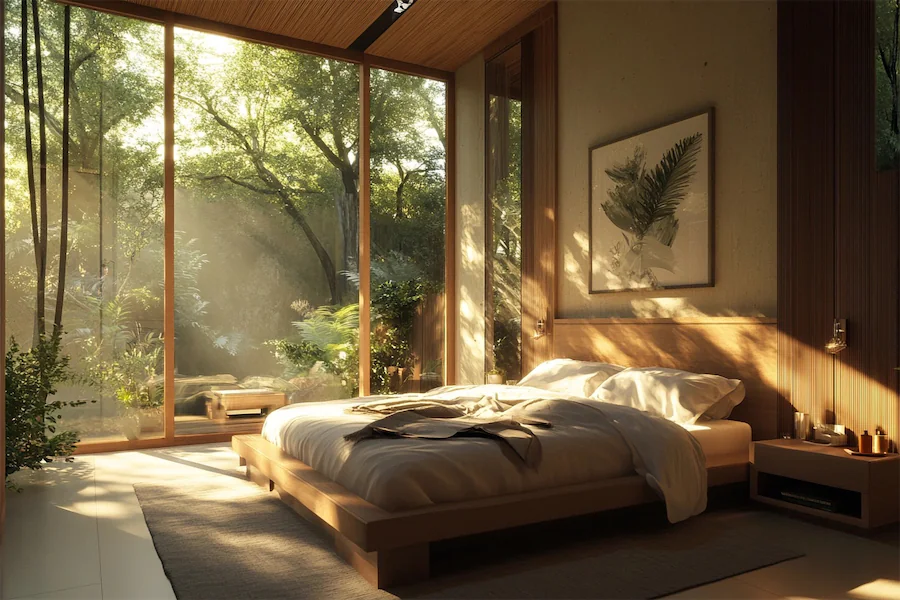Designing a quiet retreat bedroom involves creating a serene and restful environment that promotes relaxation and rejuvenation.
Key Features of a Quiet Retreat Bedroom
- Soothing Color Palette: Utilize soft, neutral tones such as beiges, light grays, or muted pastels to establish a calming atmosphere. These colors can make the space feel more tranquil and inviting.
- Comfortable Bedding: Invest in high-quality, natural fiber linens and plush pillows to enhance comfort and promote restful sleep. Layering different textures can add depth and coziness to the bed.
- Ambient Lighting: Incorporate soft, adjustable lighting options such as bedside lamps, wall sconces, or dimmable overhead fixtures to create a warm and inviting ambiance. Consider using warm light bulbs to enhance the soothing effect.
- Natural Elements: Introduce indoor plants, wooden furniture, or natural textiles to bring elements of nature into the space, fostering a sense of tranquility. Plants can also improve air quality, contributing to a healthier environment.
- Clutter-Free Space: Maintain an organized and tidy room by incorporating sufficient storage solutions to minimize visual clutter, which can contribute to a more peaceful environment. Built-in storage or multifunctional furniture can be particularly effective.
Applications of Quiet Retreat Bedrooms
- Minimalist Design: Embrace simplicity by selecting essential furniture pieces with clean lines, avoiding excessive decor to maintain a serene atmosphere. This approach can make the room feel more spacious and uncluttered.
- Zen-Inspired Spaces: Incorporate elements such as tatami mats, low-profile beds, and natural materials to create a Zen-like retreat that promotes relaxation and mindfulness. A neutral color scheme and minimal decor can enhance this effect.
- Cottagecore Aesthetics: Utilize soft textiles, vintage-inspired furniture, and floral patterns to evoke a cozy, countryside retreat within your bedroom. This style emphasizes comfort and a connection to nature.
Considerations When Designing a Quiet Retreat Bedroom
- Soundproofing: Incorporate heavy curtains, rugs, or acoustic panels to reduce noise levels, ensuring a peaceful environment conducive to rest. Soundproofing can be particularly important in urban settings or noisy households.
- Personal Touches: Add personal items that bring joy and comfort, such as family photos or cherished books, to make the space uniquely yours while maintaining a serene atmosphere. Be selective to avoid clutter.
- Technology-Free Zone: Limit electronic devices in the bedroom to reduce distractions and promote better sleep quality, reinforcing the room’s purpose as a restful retreat. Consider creating a designated charging station outside the bedroom.
Conclusion
Creating a quiet retreat bedroom involves thoughtful selection of colors, materials, and design elements that promote relaxation and tranquility. By focusing on comfort, simplicity, and natural elements, you can transform your bedroom into a serene sanctuary that supports rest and rejuvenation.
